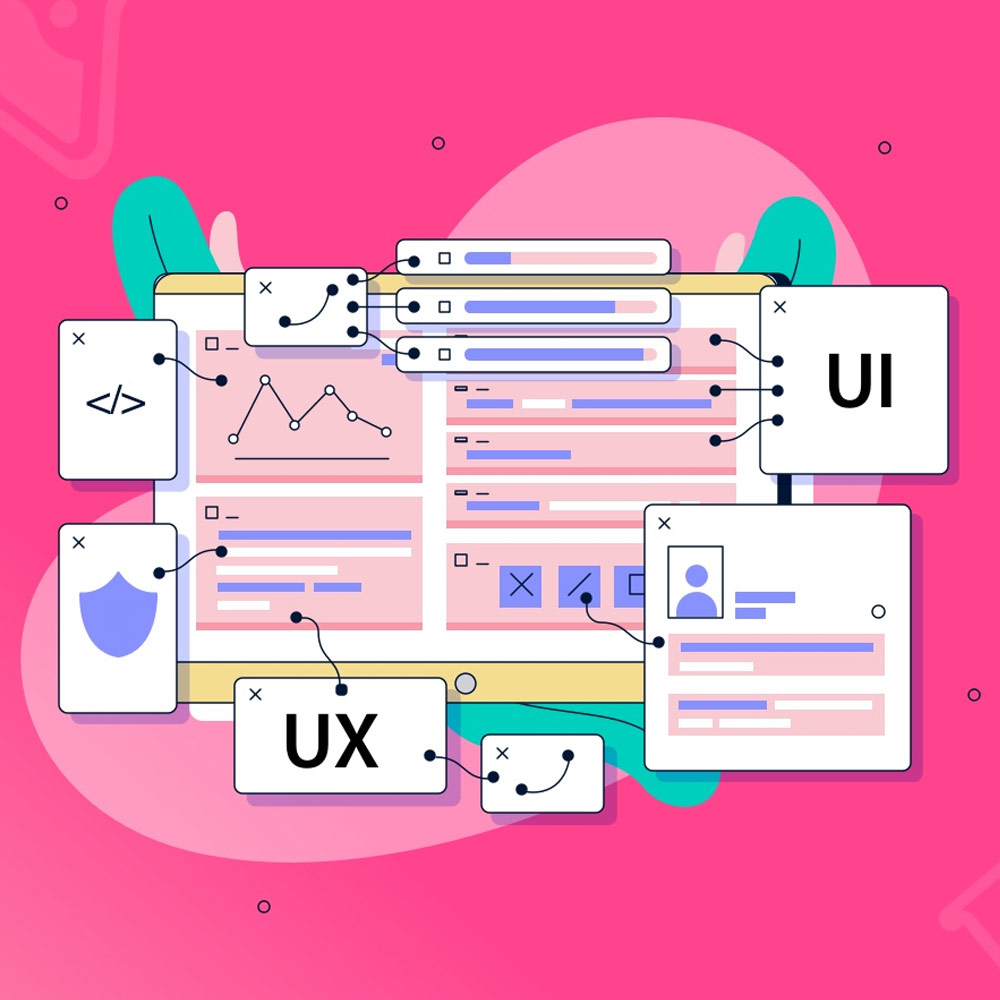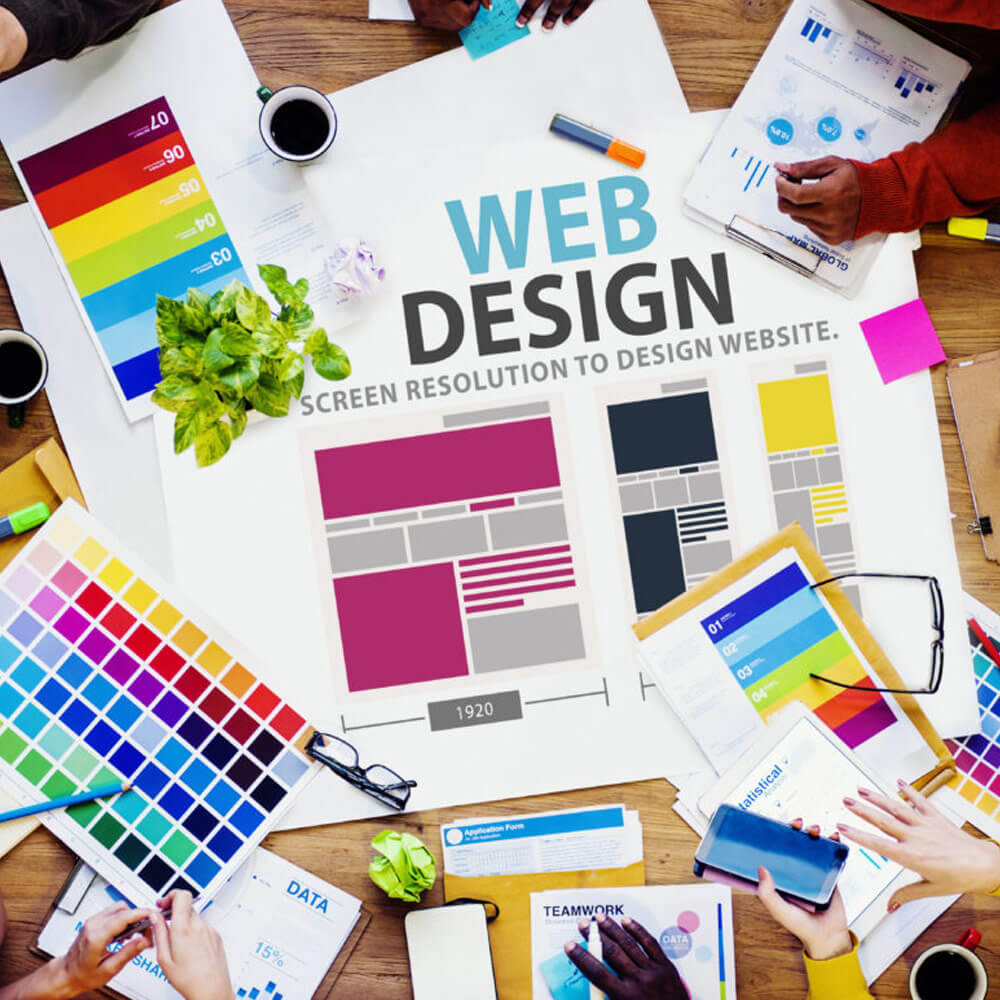
Web Design Process
A well-designed website plays a crucial role in attracting and engaging visitors, ultimately leading to conversions and success. However, creating a website involves more than just putting together a few web pages. It requires a systematic and strategic approach known as the web design process.
In this article, we will explore the web design process in detail. We will discuss its importance, outline the steps involved, and provide insights and best practices for each stage. By understanding and following this comprehensive web design process, you can ensure the successful creation of a website that meets your goals and delivers an exceptional user experience.
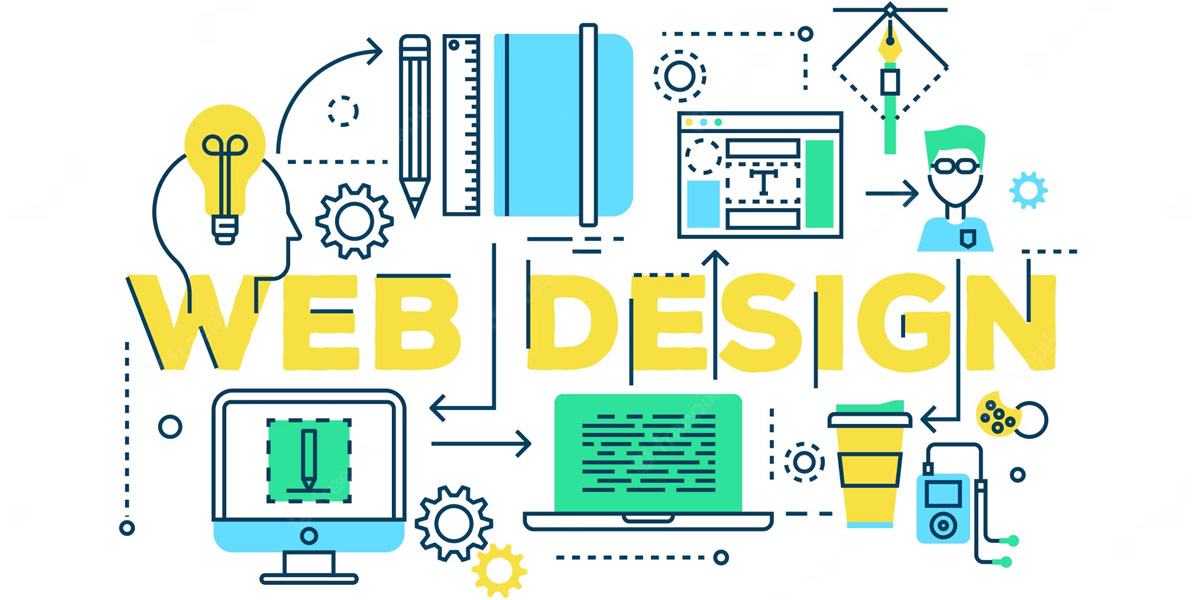
Web Design Process from A to Z
Step 1: Project Definition
Before diving into the web design process, defining the project’s scope and objectives is crucial. This initial step sets the foundation for the entire design journey. Here are the key aspects of the project definition:
Determining the Goal of the Website
Every website has a purpose, whether it’s to showcase products, provide information, or facilitate online transactions. Understanding the primary goal of your website is essential for making design decisions that align with your objectives.
Collaborating with Stakeholders
Identifying and involving relevant stakeholders is crucial for a successful web design project. This includes key decision-makers, marketers, designers, developers, and content creators. Collaborating with stakeholders ensures that everyone is on the same page and enables effective communication throughout the process.
Creating a Project Plan
A project plan outlines the timelines, milestones, and resources required for the web design process. It helps keep the project organized and ensures that tasks are completed in a timely manner. A well-defined project plan sets expectations and facilitates smooth project management.
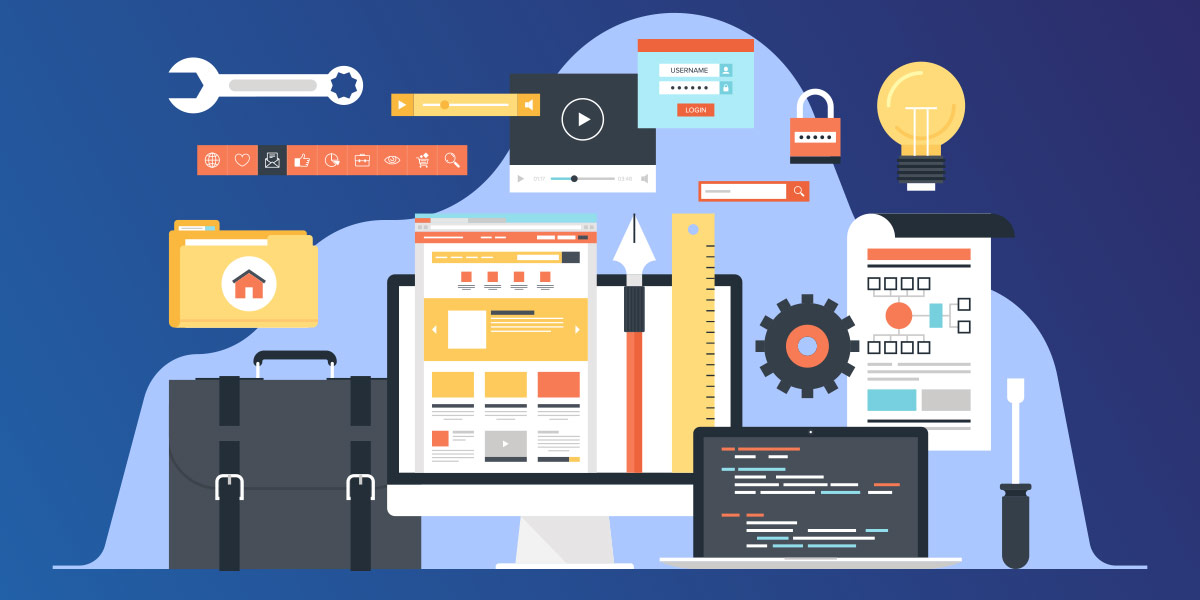
Web Design Process: Project Definition
Step 2: Research and Planning
Thorough research and careful planning lay the groundwork for a successful web design. In this step, you gather information, analyze the market and competitors, and strategize your content. Here’s what it entails:
Conducting Market Research
Market research involves understanding your target audience, their preferences, and their online behavior. It helps you tailor your website to meet their needs and expectations effectively. Market research may involve surveys, interviews, and analyzing industry trends.
Analyzing Competitors
Studying your competitors’ websites provides valuable insights into their strategies, strengths, and weaknesses. By analyzing competitor websites, you can identify areas where you can differentiate yourself and create a unique user experience.
Creating a Content Strategy
A well-defined content strategy ensures that your website delivers the right information to your audience. It involves identifying the types of content you will create, determining the messaging and tone, and planning a content calendar.
Developing a Sitemap and Wireframes
A sitemap is a visual representation of the website’s structure and navigation. It helps organize the content and ensures a logical flow of information. Wireframes, on the other hand, are skeletal representations of the website’s pages. They focus on layout and functionality without incorporating visual design elements.
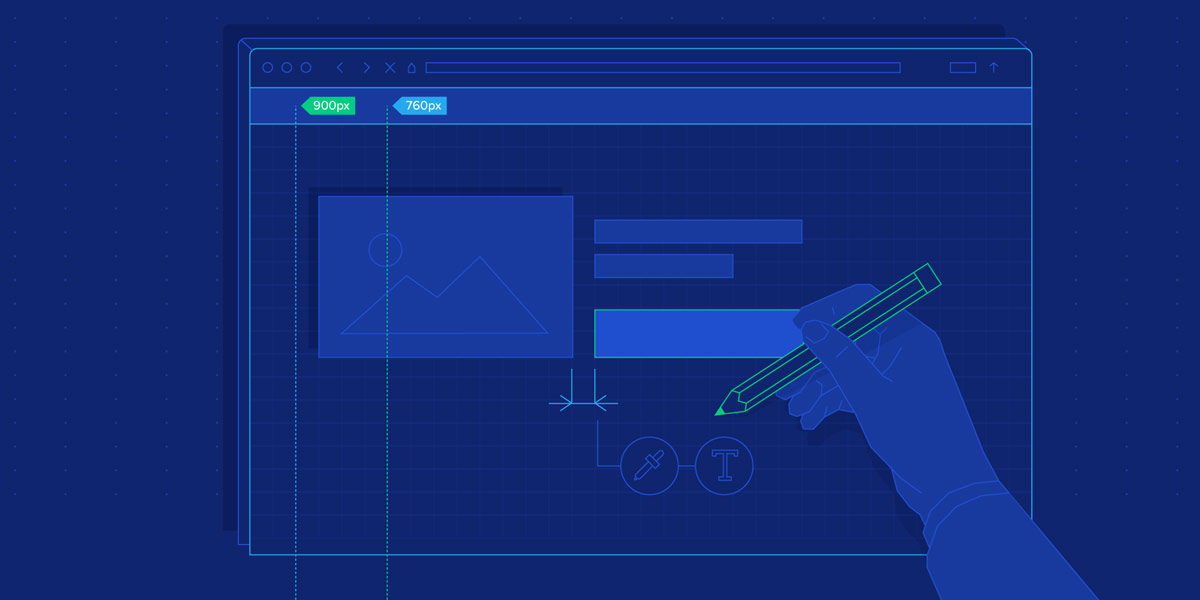
Web Design Process: Research and Planning
Step 3: Design
Design is where the creative process comes to life. This step involves creating the visual style, designing the user interface, and producing mockups and prototypes. Here’s what it encompasses:
Creating a Visual Style
The visual style of your website should align with your brand identity and appeal to your target audience. It includes choosing colors, typography, imagery, and other visual elements that create a cohesive and visually pleasing experience.
Designing the User Interface
The user interface (UI) design focuses on creating an intuitive and user-friendly interface for your website. It involves designing elements such as buttons, navigation menus, forms, and other interactive components. The UI design should prioritize usability and accessibility.
Creating Mockups and Prototypes
Mockups and prototypes are visual representations or interactive models of the website’s design. They help you visualize the layout, functionality, and user experience before moving into development. Mockups are static representations, while prototypes are interactive and allow for user testing and feedback.

Web Design Process: Design
Step 4: Development
Once the design is finalized, it’s time to bring it to life through development. This step involves coding the website using appropriate technologies, implementing functionality, and ensuring compatibility across devices and browsers. Here’s what it entails:
Front-End Development
Front-end development focuses on coding the user interface using HTML, CSS, and JavaScript. It involves translating the design into a functional website with interactive elements, responsiveness, and cross-browser compatibility.
Back-End Development
Back-end development involves building the server-side functionality of the website. This includes setting up databases, handling data processing, and implementing features such as user authentication, content management systems (CMS), and e-commerce functionality.
Content Population
During development, it’s important to populate the website with relevant and engaging content. This includes writing and formatting text, optimizing images and videos, and ensuring the content is SEO-friendly.
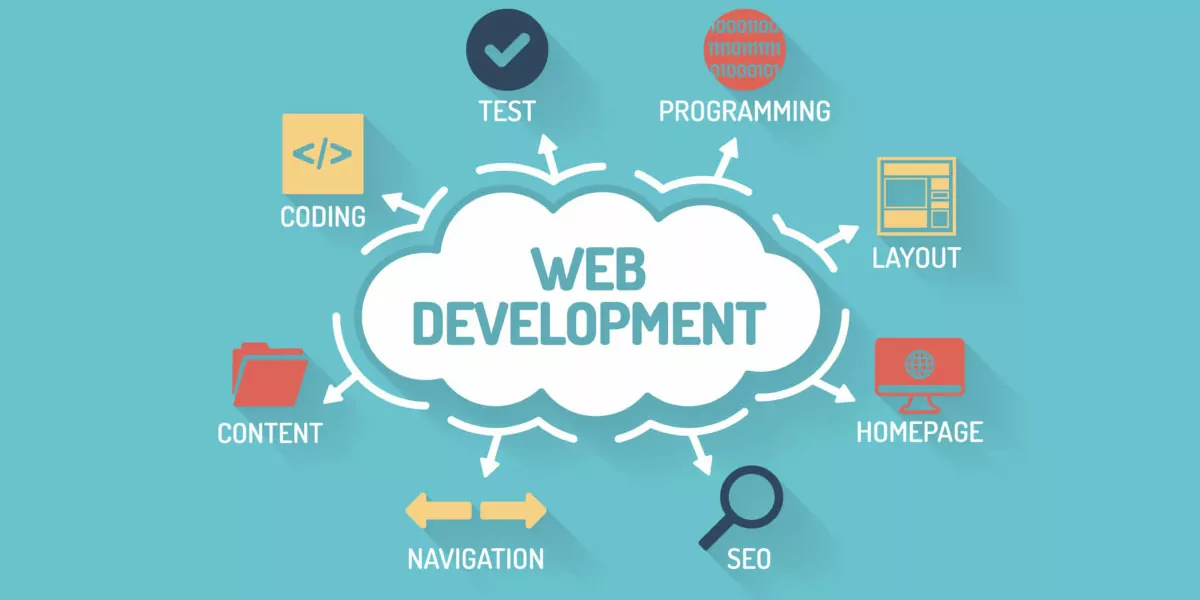
Web Design Process: Development
Step 5: Testing and Quality Assurance
Testing and quality assurance are critical to ensure a bug-free and optimized website. This step involves thorough testing of the website’s functionality, performance, and compatibility. Here’s what it includes:
Functionality Testing
Functionality testing ensures that all interactive elements, forms, links, and features of the website work as intended. It involves testing user interactions, data submission, error handling, and validating form inputs.
Compatibility Testing
Compatibility testing ensures that the website functions correctly across different devices, operating systems, and browsers. It involves testing the website on various combinations of devices, screen sizes, and browsers to ensure consistent performance.
Performance Optimization
Performance optimization focuses on improving the website’s speed and efficiency. This includes optimizing code, compressing images and files, caching resources, and implementing techniques to reduce load times.
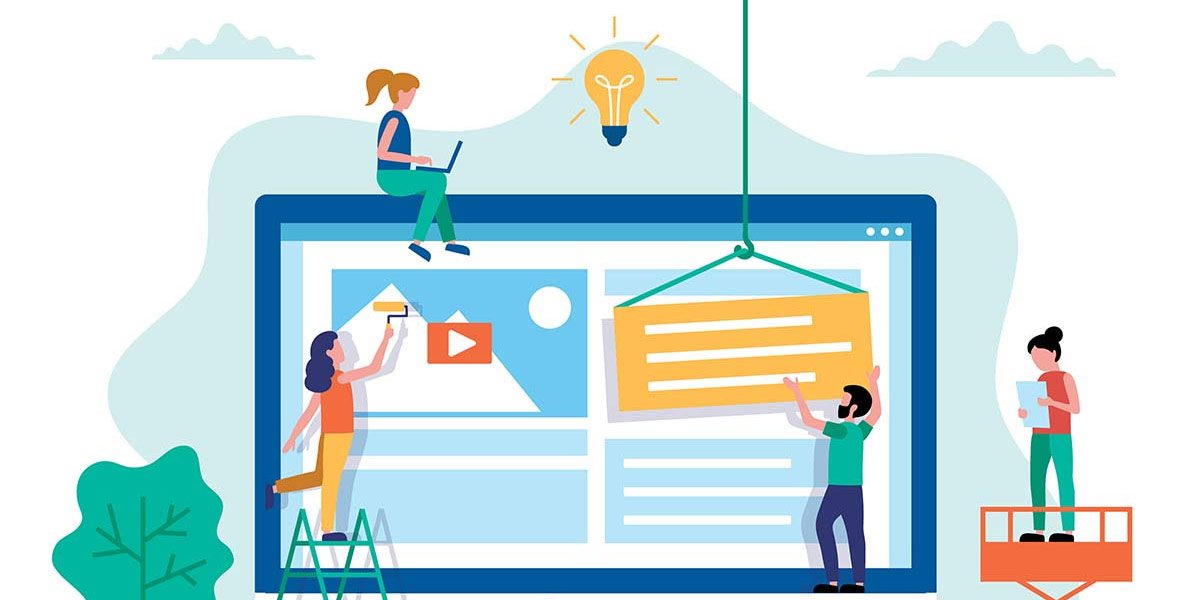
Web Design Process: Testing and Quality Assurance
Step 6: Deployment
Once the website has been thoroughly tested and optimized, it’s time to deploy it to a live server and make it accessible to the public. Here’s what this step involves:
Web Hosting Setup
Choose a reliable web hosting provider and set up the necessary server configurations. Ensure that the hosting environment supports the website’s requirements regarding storage, bandwidth, security, and scalability.
Domain Name Configuration
Register a domain name that aligns with your brand and configure it to point to the web hosting server. This involves updating DNS records and ensuring proper domain propagation.
Content Migration
If you are migrating an existing website or have content from a staging environment, this is the step where you transfer the content to the live server. Ensure that all files, databases, and media assets are properly migrated and linked.
Final Testing and Launch
Perform a final round of testing on the live server to ensure that everything is functioning correctly. Once you are confident in the website’s performance, launch it to the public and make it accessible to your target audience.
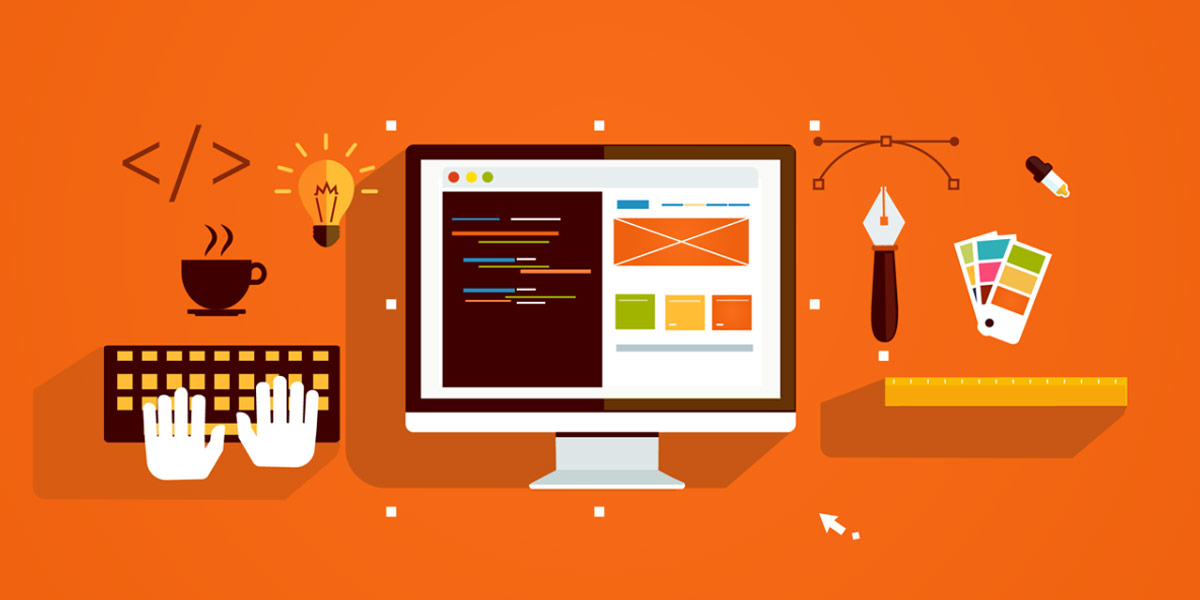
Web Design Process: Deployment
Step 7: Maintenance and Iteration
After launching the website, the work doesn’t stop. It’s important to regularly maintain and update the website to ensure it remains secure, optimized, and aligned with your evolving goals. Here’s what this step includes:
Monitoring and Analytics
Set up website analytics to track user behavior, conversions, and performance metrics. Regularly review the data to gain insights and make informed decisions for future improvements.
Security Updates
Stay updated with the latest security practices and implement necessary security updates to protect the website from vulnerabilities and potential threats.
Content Updates and Optimization
Continuously update and optimize the website’s content to keep it fresh, relevant, and engaging. Regularly review and refine the website’s SEO strategies to improve visibility in search engines.
User Feedback and Iteration
Encourage user feedback and actively seek input to identify areas of improvement. Use this feedback to iterate on the website’s design, functionality, and user experience, making it more effective over time.
Technical Maintenance
Regularly monitor the website for technical issues such as broken links, slow loading times, or compatibility problems. Conduct routine checks to ensure all features and functionalities are working as intended.
Software Updates
Keep all software components of the website, including content management systems (CMS), plugins, and themes, up to date. Regularly check for updates and implement them to benefit from bug fixes, new features, and security patches.
Backup and Recovery
Implement regular backup procedures to protect the website’s data and files. This ensures that if any unforeseen issues or data loss occurs, you can restore the website to a previous state.
Performance Optimization
Continuously optimize the website’s performance by monitoring loading times, page sizes, and overall speed. Implement caching, compression, and other techniques to improve the website’s performance and provide a smooth user experience.
Accessibility Compliance
Regularly review and ensure that the website meets accessibility standards, making it accessible to users with disabilities. Implement necessary changes to improve accessibility and ensure compliance with accessibility guidelines.
Future Enhancements and Iterations
As your business evolves and user needs change, plan for future enhancements and iterations of the website. Regularly assess the website’s performance, gather user feedback, and identify areas for improvement or new features to be implemented.
By following these steps and consistently maintaining and iterating on the website, you can ensure its long-term success and effectiveness in achieving your goals.
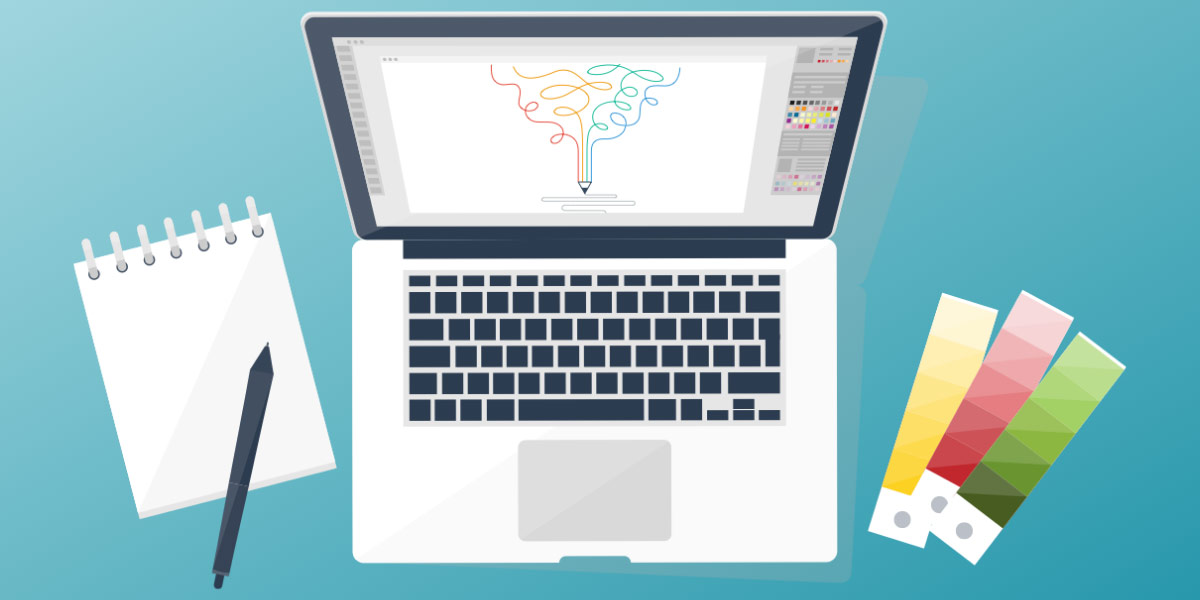
Web Design Process: Maintenance and Iteration
Step 8: Marketing and Promotion
Creating a great website is just the first step. To drive traffic, increase visibility, and reach your target audience, it’s essential to implement marketing and promotional strategies. Here are some key considerations:
Search Engine Optimization (SEO)
Optimize your website’s content and structure to improve its visibility in search engine results. Conduct keyword research, optimize meta tags, create quality content, and build high-quality backlinks to increase organic traffic.
Social Media Integration
Integrate social media sharing buttons and links on your website to encourage users to share your content. Maintain an active presence on relevant social media platforms to engage with your audience, promote your website, and drive traffic.
Email Marketing
Implement an email marketing strategy to build a subscriber base and nurture customer relationships. Collect email addresses through your website and send regular newsletters, updates, promotions, and personalized content to your subscribers.
Pay-Per-Click (PPC) Advertising
Consider running paid advertising campaigns through platforms like Google Ads or social media advertising to increase visibility and drive targeted traffic to your website. Set a budget, define your target audience, and optimize your ads for maximum effectiveness.
Content Marketing
Produce high-quality content, such as blog posts, articles, videos, infographics, or podcasts, that align with your target audience’s interests and needs. Share this content on your website and across various channels to attract and engage users, positioning yourself as an authority in your industry.
Influencer Marketing
Collaborate with influencers or industry experts who have a substantial following in your niche. Partnering with them can help promote your website to their audience and drive traffic and conversions.
Online Directories and Listings
Submit your website to relevant online directories and listings to improve visibility and increase the chances of being discovered by potential customers. Ensure your business information is accurate and up to date.
Referral Programs and Partnerships
Implement referral programs or establish partnerships with complementary businesses or affiliates to tap into their customer base. Offer incentives for referrals or collaborate on joint promotions to expand your reach.
Analytics and Tracking
Use web analytics tools to track the effectiveness of your marketing efforts. Monitor key metrics such as website traffic, conversions, bounce rate, and engagement to identify areas for improvement and make data-driven decisions.
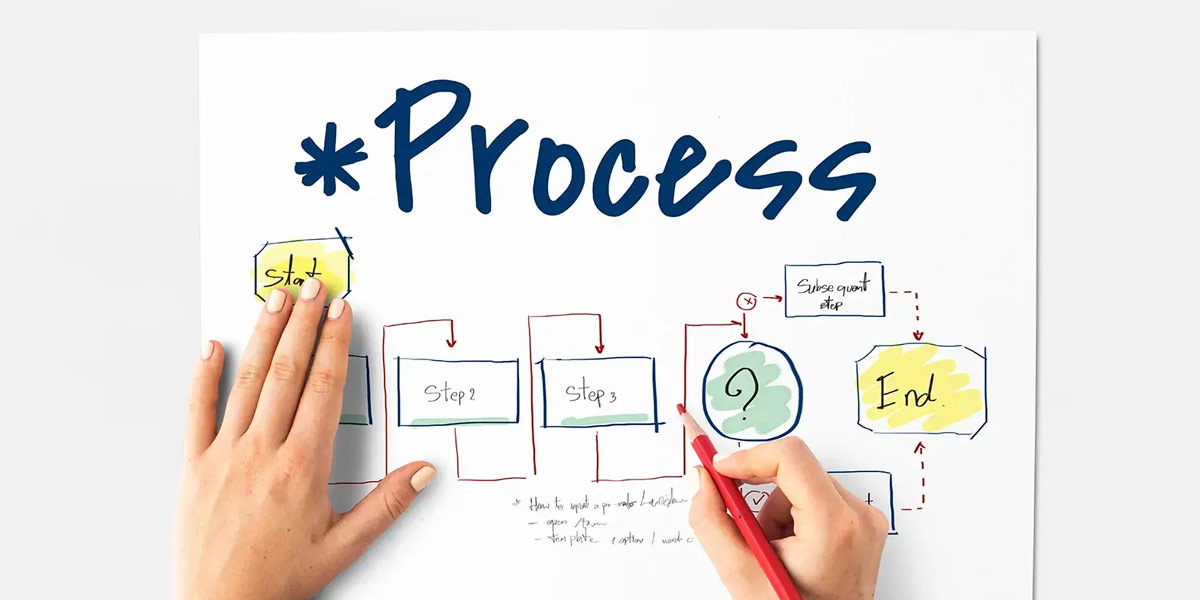
Web Design Process: Marketing and Promotion
Conclusion
In conclusion, the web design process is a structured and iterative approach to creating effective and engaging websites. Following a well-defined process ensures that the website meets the client’s goals, resonates with the target audience, and delivers a positive user experience. From project definition to launch and beyond, each step in the process plays a vital role in creating a successful website.
By determining the goal of the website, collaborating with stakeholders, conducting research, creating a visual style, developing content, building and testing the website, and finally launching and maintaining it, the web design process ensures that websites are created with purpose, strategy, and user experience in mind.
The web design process is not a linear path but rather a cyclical one, where feedback and continuous improvement drive the evolution of the website. By following a structured process, designers, developers, and stakeholders can work together to create websites that effectively communicate messages, achieve business objectives, and provide an exceptional user experience.
Remember, the web design process is not a one-size-fits-all approach. It can be tailored and adapted to meet the specific needs of each project and client. By understanding the importance of each step and applying best practices, you can ensure the success of your web design projects.
So, the next time you embark on a web design project, remember the web design process and its essential steps. By following a structured approach, you can create websites that leave a lasting impression, engage visitors, and drive results.
FAQ
What are the steps involved in the web design process?
The web design process typically involves the following steps:
- Gathering requirements: Understand the client’s needs, goals, and target audience.
- Planning: Create a sitemap and wireframes to define the website’s structure and layout.
- Design: Create visual mockups and choose color schemes, typography, and imagery.
- Content creation: Write and gather the content that will be included on the website.
- Development: Convert the design into a functional website using HTML, CSS, and other programming languages.
- Testing and QA: Verify the website’s functionality, responsiveness, and compatibility across different browsers and devices.
- Launch: Publish the website and make it accessible to the public.
- Maintenance: Regularly update and maintain the website to ensure it remains secure and up to date.
How do I identify the goal of my website?
To identify the goal of your website, consider the purpose you want it to serve. Ask yourself questions like:
- Do you want to sell products or services?
- Do you want to generate leads?
- Do you want to provide information or resources?
- Do you want to showcase your portfolio or skills?
- Do you want to build an online community?
Clearly defining your website’s goal will help guide the design and content decisions throughout the development process.
Who is my target audience?
Identifying your target audience involves understanding the demographic, interests, and preferences of the people you want to attract to your website. Consider factors such as age, gender, location, education, and occupation. Conduct market research and analyze your existing customer base to gain insights into their needs, motivations, and online behavior. This information will help you tailor your website’s design, content, and messaging to effectively engage your target audience.
What are the major objectives I want to accomplish with my website?
The objectives of your website depend on your specific business or organization. Some common objectives include:
- Increasing online sales or conversions
- Building brand awareness and credibility
- Providing information or support to customers
- Generating leads or inquiries
- Encouraging user engagement and interaction
- Showcasing products, services, or portfolio
Clearly defining your objectives will help you prioritize features, design elements, and content that align with your goals.
What services do I want to offer to my customers?
Consider the products, services, or resources you want to provide to your customers through your website. Examples include:
- E-commerce functionality for selling products online
- Booking and reservation systems for service-based businesses
- Membership or subscription-based content access
- Online forms for inquiries or feedback
- Educational resources or tutorials
- Customer support or live chat
Identifying the services you want to offer will shape the structure and functionality of your website.
What are the benefits of my existing website, if any?
To determine the benefits of your existing website, assess its performance and gather feedback from users or customers. Consider factors such as:
- Ease of use and navigation
- Visual appeal and branding consistency
- Conversion rates and user engagement
- Search engine visibility and traffic
- Feedback or testimonials from users
- Impact on your business goals
Understanding the benefits of your existing website will help identify areas of improvement for the redesign or provide insights into what elements to retain.
How can I ensure that my website is visually appealing and easy to use?
To ensure a visually appealing and user-friendly website, consider the following:
- Use a clean and uncluttered design with a consistent visual theme and branding.
- Choose fonts, colors, and imagery that align with your brand identity and enhance readability.
- Create a logical and intuitive navigation structure that makes it easy for users to find information.
- Optimize the website’s layout for different devices and screen sizes.
- Incorporate white space to improve readability and highlight important content.
- Use clear and concise language to communicate effectively with your audience.
- Conduct user testing and gather feedback to identify areas for improvement.
What is the importance of planning and implementing a tried-and-tested web design process?
Planning and implementing a tried-and-tested web design process is important for several reasons:
- It ensures a systematic approach to website development, reducing the likelihood of errors and oversights.
- It helps establish clear goals, requirements, and timelines for the project.
- It enables effective communication and collaboration among the design team, stakeholders, and developers.
- It facilitates the allocation of resources and budgeting.
- It helps maintain consistency and quality throughout the design and development phases.
- It allows for better risk management and contingency planning.
By following a well-defined web design process, you can increase the likelihood of achieving your desired outcomes efficiently and effectively.
How can I gather all the necessary information for my web design project?
To gather the necessary information for your web design project, consider the following steps:
- Conduct client or stakeholder interviews to understand their requirements, goals, and preferences.
- Review existing materials, such as brochures, marketing materials, or branding guidelines.
- Analyze your target audience through market research and user surveys.
- Study competitor websites to identify industry trends and best practices.
- Create questionnaires or forms to gather specific information from clients or users.
- Collaborate with content creators, copywriters, or subject matter experts to gather relevant content.
- Conduct usability testing or user interviews to gain insights into user preferences and expectations.
By actively gathering information from various sources, you can ensure that your web design project is well-informed and meets the needs of your clients and target audience.
What are the best practices for building a website that meets my business needs and goals?
To build a website that meets your business needs and goals, consider the following best practices:
- Clearly define your objectives and target audience.
- Ensure a responsive and mobile-friendly design.
- Optimize your website for search engines (SEO).
- Prioritize user experience and usability.
- Regularly update and maintain the website’s content and functionality.
- Incorporate effective call-to-action elements.
- Monitor and analyze website performance through analytics.
- Ensure your website is secure and protected against vulnerabilities.
- Integrate social media and other marketing channels.
- Stay updated with industry trends and technology advancements.
By following these best practices, you can increase the chances of building a successful website that aligns with your business goals and provides a positive user experience.

With over two decades of web design and development expertise, I craft bespoke WordPress solutions at FallingBrick, delivering visually striking, high-performing websites optimised for user experience and SEO.




